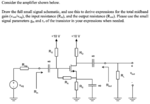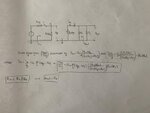Wow_01
Newbie
Hi,
I'm trying to solve an old exam problem, which i've attached below, and need to know if I've done it correctly (I don't think I have since I've not used r0 as stated I should in the problem). Could someone please help me with this, I would really appreciate it :smile:
Problem:

My solution:

Thanks in advance!
I'm trying to solve an old exam problem, which i've attached below, and need to know if I've done it correctly (I don't think I have since I've not used r0 as stated I should in the problem). Could someone please help me with this, I would really appreciate it :smile:
Problem:

My solution:

Thanks in advance!